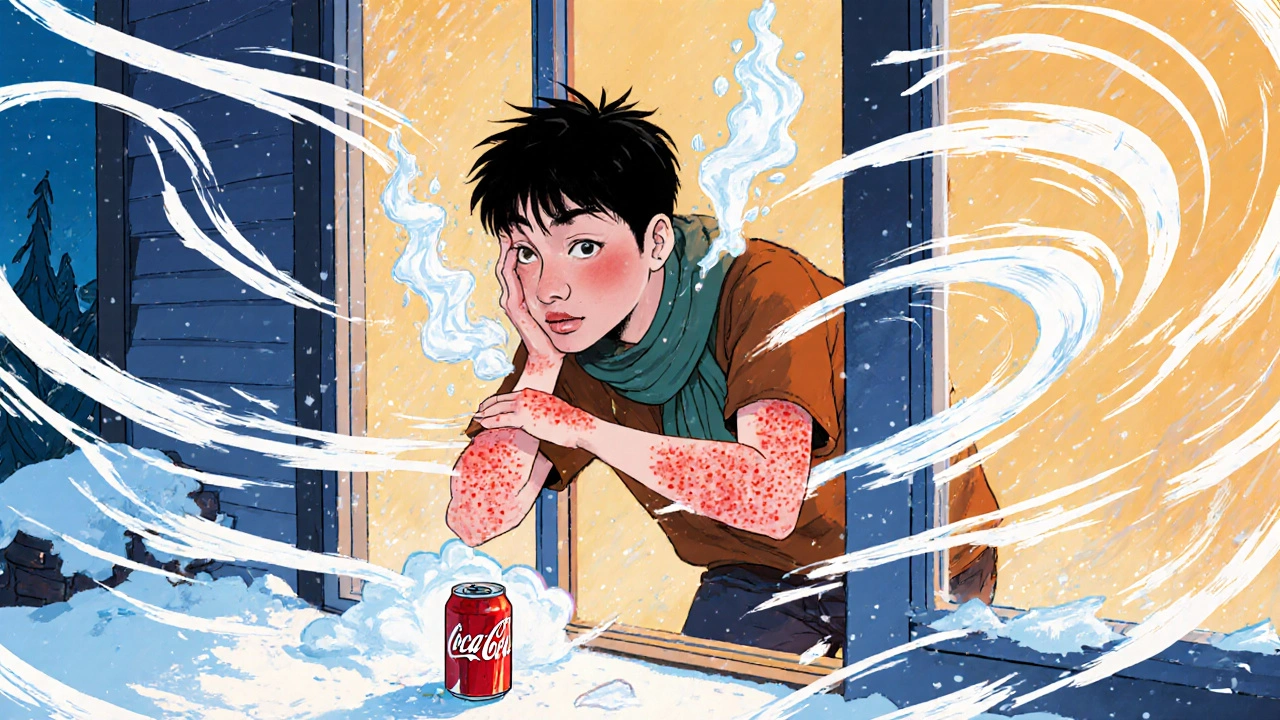Cold Urticaria: Triggers, Symptoms, and What You Can Do
When your skin reacts to cold with itchy red bumps or swelling, you might be dealing with cold urticaria, a condition where exposure to cold temperatures triggers an allergic-like skin reaction. Also known as cold-induced hives, it’s not just feeling chilly—it’s your body overreacting to temperature changes, sometimes even from holding a cold drink or stepping into an air-conditioned room. Unlike regular hives that come from food or pollen, cold urticaria is triggered by physical stimuli—specifically, cold air, water, or objects. It can happen suddenly, even in people who never had allergies before.
People with this condition often notice symptoms within minutes of cold exposure: red, raised welts that burn or sting, swelling in the lips or throat if they’ve had cold food or drinks, and in rare cases, dizziness or trouble breathing. It’s not just annoying—it can be dangerous if you’re swimming in cold water or exposed to freezing temperatures. Some folks only get it in winter; others react even in summer when the AC kicks on. The severity varies widely: for some, it’s mild and manageable; for others, it limits daily life.
What causes it? No one knows for sure, but it’s tied to how your immune system releases histamine in response to cold. It’s not contagious, and it’s not caused by poor hygiene. Some cases pop up after infections or viruses, while others seem to run in families. There’s no cure, but many people find relief with daily non-drowsy antihistamines like cetirizine or loratadine. Avoiding sudden cold exposure helps—wearing layers, warming up slowly, and avoiding ice-cold drinks can make a real difference. If antihistamines don’t work, doctors might try other meds like omalizumab, which targets the immune system directly.
You’ll find real stories here from people who’ve learned to live with cold urticaria. Some share how they adjusted their routines to avoid flare-ups. Others talk about what worked when standard treatments failed. You won’t find vague advice like "stay warm"—you’ll get practical tips on what meds help, how to recognize warning signs, and how to talk to your doctor about testing options. Whether you’ve just been diagnosed or have been dealing with this for years, the posts below give you the clear, no-fluff info you need to take control.

Cold-Induced Urticaria: What to Do When Hives Appear After Cold Exposure
Cold-induced urticaria causes itchy hives after exposure to cold temperatures. Learn how it works, how to diagnose it, and what treatments actually help-plus safety tips for swimming, winter weather, and daily life.